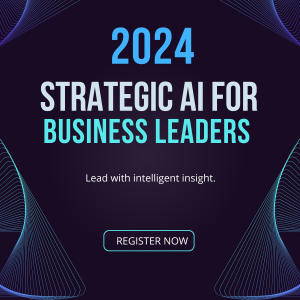AI GLOSSARY - M
Definition: A subset of artificial intelligence focused on building systems that learn from data, identify patterns, and make decisions with minimal human intervention.
Definition: A method to compute the metric independently for each class and then take the average (hence treating all classes equally), often used in classification problems where imbalance might exist between classes.
Definition: A type of unsupervised learning that aims to discover low-dimensional structure within high-dimensional data. It’s used for tasks like dimensionality reduction, where simplifying data without losing important information is key.
Definition: The amount of error in an estimation process, which can reflect the confidence in the results of a model. It is widely used in statistics and machine learning to understand the potential deviation in predictions.
Definition: A mathematical framework for modelling decision making in situations where outcomes are partly random and partly under the control of a decision maker. MDPs are useful for studying optimisation problems solved via dynamic programming and reinforcement learning.
Definition: An extension of the Region-based Convolutional Neural Networks (R-CNN) that adds a branch for predicting segmentation masks on each Region of Interest (RoI), used in object instance segmentation.
Definition: A measure of errors between paired observations expressing the same phenomenon. Comparisons between methods using MAE are more robust, especially when dealing with outliers.
Definition: A risk metric corresponding to the expected value of the squared (quadratic) error or loss. It is heavily used in regression analysis to compile the average squared difference between estimated values and what is estimated.
Definition: Sometimes referred to as “learning to learn,” it involves teaching machine learning models to learn new skills or adapt to new environments rapidly with minimal data.
Definition: An approach in machine learning where the goal is to learn a metric or distance function tuned to a particular task. This helps in tasks like clustering and classification by learning an optimal way to measure distances between pairs of instances.
Definition: The version of a new product a team uses to collect the maximum amount of validated learning about customers with the least effort. In AI, this concept is used to develop a product with enough features to attract early-adopter customers and validate a product idea early in the product development cycle.
Definition: The method by which a machine learning model is incorporated into an existing production environment to make practical business decisions based on data. It involves integrating a machine learning algorithm into an existing production environment.
Definition: The ability of a machine learning model to perform well on new, unseen data that was not used during the training process.
Definition: A process in machine learning that involves tuning the parameters of algorithms to achieve the best possible performance, which could be in terms of prediction accuracy, running time, or both.
Definition: A measurement of an object’s resistance to changes in its rotation rate. In data science, it’s used in k-means clustering as an evaluation metric to measure the dispersion of data points around centroids.




